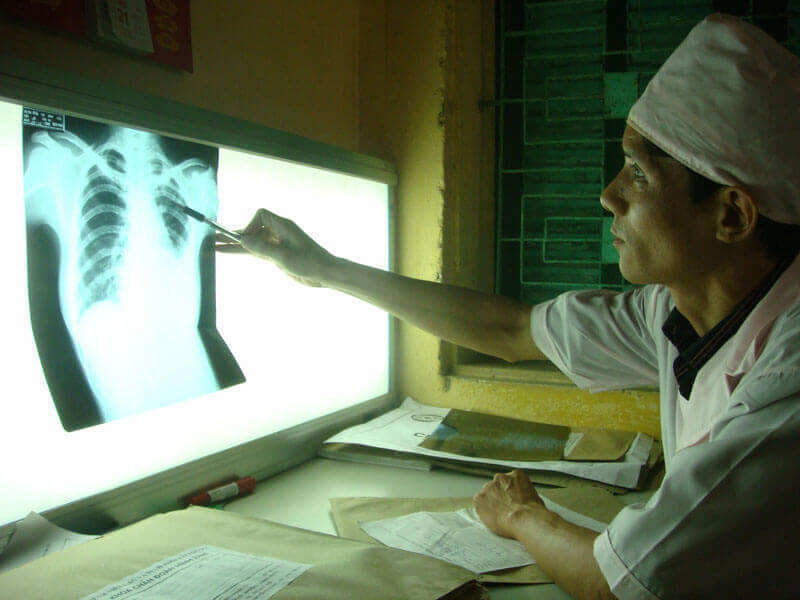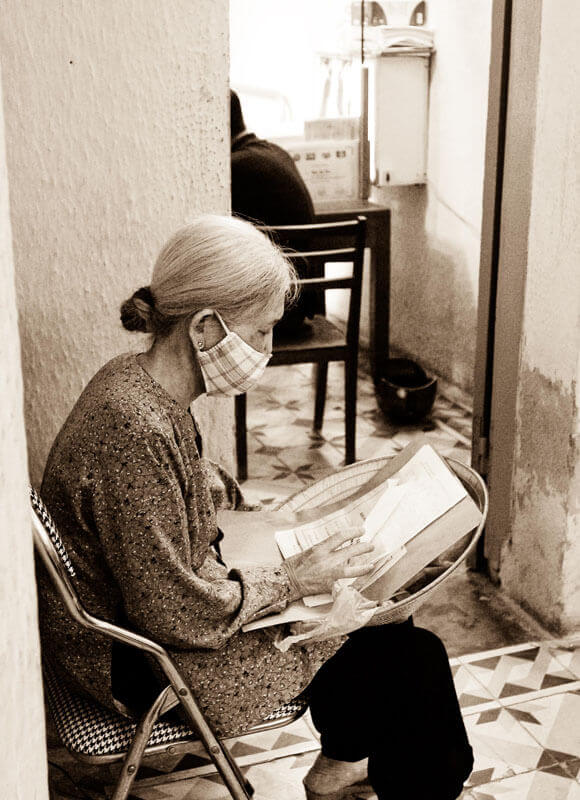Earlier this month, advocates from the
Community Research Advisors Group
(CRAG)—an international, community-based advisory body working to ensure the engagement of affected communities in tuberculosis (TB) research conducted by the Centers for Disease Control and Prevention (CDC) —published an article in
The Lancet offering a community perspective on the use of the drug bedaquiline to treat drug-resistant and drug-susceptible TB. The US Food and Drug Administration (FDA) approved bedquiline for the treatment of drug-resistant tuberculosis—via an accelerated approval process—in December 2012, making it the first new drug from a novel class approved to treat TB in more than 40 years.
Laia Ruiz Mingote and Dorothy Namutamba—co-chairs of CRAG— and Mike Watson Frick—TB/HIV Program Officer at GHTC member organization, Treatment Action Group—are among the article’s co-authors, and join us to answer questions about the article and discuss the benefits and risks of using bedaquiline to treat TB.

- Bedaquiline is the first new drug from a novel class approved to treat TB in more than 40 years. PATH/Katrina Peach
Q: Bedaquiline has been shown to be effective in treating drug-resistant TB in combination with other drugs, but it also has some serious side-effects and risks. Explain what those are.
In Phase II studies, bedaquiline showed promising activity against multidrug-resistant TB (MDR-TB). The drug reduced the average time to a negative
TB culture from 18 to 12 weeks and increased the proportion of participants with a negative culture at 6 months from 58 percent to 79 percent.
However, bedaquiline posed several safety concerns that should be addressed before testing the drug in people with drug-susceptible TB.
Most attention has focused on bedaquiline’s association with QT prolongation—a potentially serious disturbance in the heart’s electrical rhythm.
Other TB drugs also cause QT prolongation, including moxifloxacin and the other new MDR-TB drug, delamanid (developed by the company Ostuka). Other
side effects of bedaquiline include liver toxicity, accumulation of phospholipids in cells, and even death. In one Phase II trial, a significantly
higher number of participants receiving bedaquiline died than those receiving placebo. While these deaths did not have a common cause and occurred
months after the trial, the FDA could not rule out the possibility that bedaquiline played a role. Since bedaquiline has a long half-life, meaning
that it remains in the body for a long time, the drug may continue to pose a side effect risk to patients even after they stop taking it.
Q: Given its side effects and risks, do you still believe bedaquiline merited accelerated approval by the FDA? Do you believe other countries should also approve bedaquiline’s use for drug-resistant TB?
The accelerated approval was necessary. There are few effective treatment options for patients with MDR-TB and extensively drug-resistant TB (XDR-TB),
and many of these patients are unable to tolerate existing options, as they also have strong side effects and risks of their own including hearing
loss, neurological disturbances, and skin discoloration. However, there is a need for more information and clinical data to know how to manage
the risks tied to bedaquiline. We have to make it clear that bedaquiline is not for all TB patients, but rather only for those people who are unable
to tolerate other MDR-TB drugs to which their TB is susceptible or who might not survive without access to bedaquiline, as there are no other treatment
options.
In countries and regions with high incidence of drug-resistant TB, bedaquiline is a necessary and important addition to second- and third-line therapies.
Yet most countries have been slow to approve bedaquiline, meaning that most patients can only access it through unreliable compassionate use mechanisms.
Other countries, particularly those of the former Soviet Union, lack the legal frameworks that enable compassionate use.

- In countries with high incidence of drug-resistant TB, bedaquiline is an important addition to second- and third-line therapies. PATH/Nguyen
Ba Quang
Additionally, the high price of bedaquiline may discourage its use among patients who need it most. Janssen—the company that developed bedaquiline—has
announced a tiered pricing scheme in which the price of bedaquiline varies depending on a country’s Gross National Income: high-income countries
will pay about $30,000, middle-income countries will pay $3,600 and low-income countries will pay $900. Countries with the most severe MDR-TB epidemics
are usually middle-income countries including South Africa, India, Russia, and China. While South Africa may be able to access the lowest price
of bedaquiline, it’s unclear whether Janssen will extend the lower $900 price to other middle-income countries like China, where second-line TB
drugs are not provided for free by the government. Can Chinese TB patients really afford bedaquiline at a price of $3,600? Even in high-income
countries, the steep price of the drug can drain the general budget of TB programs, especially considering the high cost of other second-line drugs
used to treat MDR-TB.
Finally, in ensuring access to the treatment, Janssen must also make every effort to track safety and patient outcomes in people who receive bedaquiline.
In the United States, a patient registry exists in theory, but many doctors do not know about the registry, and those who do have had difficulty
enrolling patients into it. In the absence of a Phase III clinical trial of bedaquiline, patient registries may offer the best way to obtain additional
safety data.
Q: Clinical trial data on bedaquiline’s use for drug-resistant TB suggests it could also be effective in shortening treatment time for drug-susceptible TB as part of a first-line therapy combination. What are your concerns about the inclusion of bedaquiline in trials exploring its use for drug-susceptible TB?
As mentioned, bedaquiline is a game changer in cases of MDR- and XDR-TB. However, for drug-susceptible TB, we have a well-established standard of care
and other options for shortening treatment using existing drugs—such as rifapentine which is manufactured by Sanofi—or investigational
drugs— such as PA-824 which was developed by the TB Alliance—that so far lack the safety signals observed in the Phase II trials of
bedaquiline. The CDC’s Tuberculosis Trials Consortium will soon begin a Phase III study to see if replacing rifampicin with rifapentine can shorten
drug-susceptible TB treatment from 6 to 4 months. The TB Alliance is also testing a 4-month drug-susceptible TB treatment regimen that uses a combination
of PA-824, moxifloxacin, and pyrazinamide.
Patients with drug-susceptible TB face a very different risk-benefit trade-off than people with drug-resistant TB. Currently, drug-susceptible TB has
a safe and effective standard of care, although we agree that at six months, it is too long and there is the necessity to make it shorter. It is
because of the safety of the regular regimen that, together with the current data, bedaquiline may not offer the best way forward for shortening
drug-susceptible TB treatment. We believe that before studying bedaquiline for drug-susceptible TB, we need much more information about this new
drug, its long-lasting presence in the body and common side effects. In addition, the use of bedaquiline in first line treatment could, in fact,
risk an increase in resistance, leaving patients with fewer treatment options.


